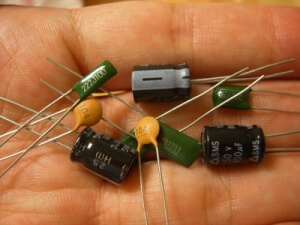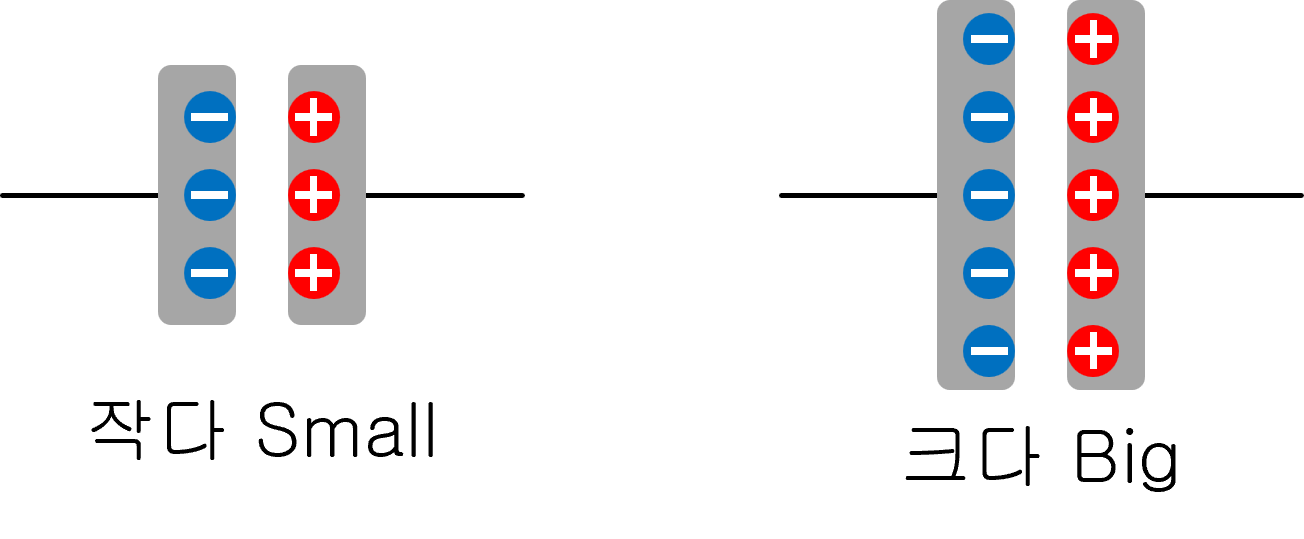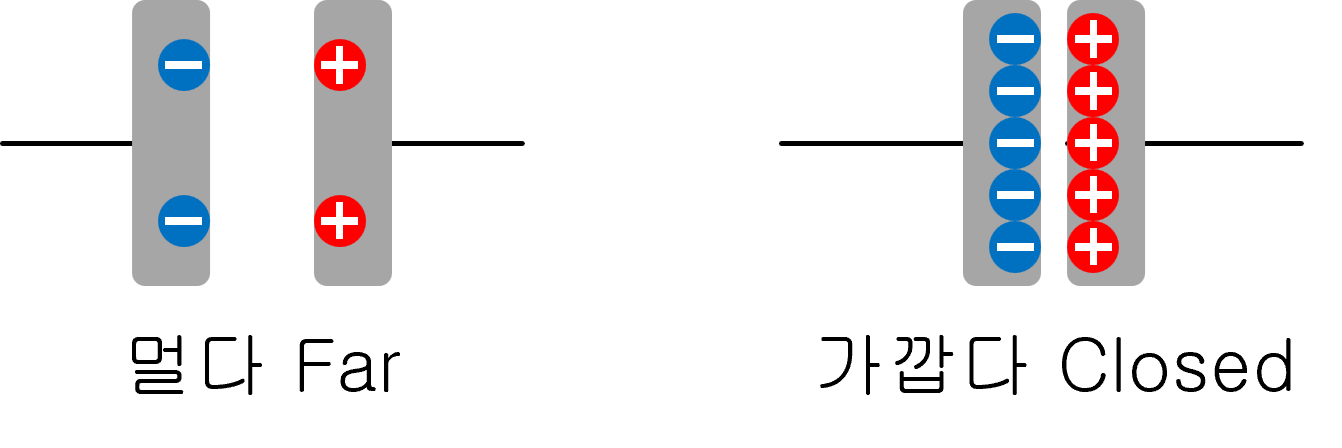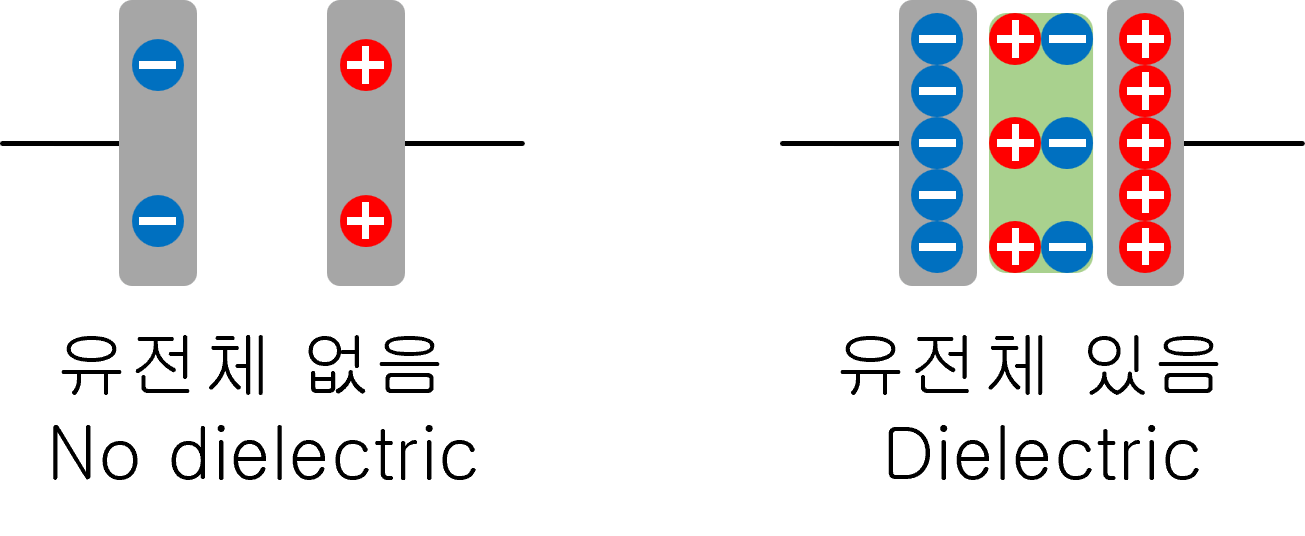Capacitor
A capacitor is an electronic component that temporarily holds charges. The stored charges can work while flowing again. Compared to a river flow, a capacitor can be likened to a dam that holds a river.

The capacitor is made by making two thin metal plates close together but not touching each other. For this reason, the symbol of the capacitor is drawn as if the two metal plates came close to each other.

When a voltage is applied to the facing electrode, charges are accumulated on the electrode. The charges do not escape to another place because the attraction forces act between the charges with different polarities.
How to increase the capacity of capacitors
Let’s see how to increase the capacity of the capacitor. First of all, it is easy to imagine that the wider the capacitor, the larger the capacity.

The narrower the gap between the electrodes, the stronger the charges’ attraction. Therefore, the capacitance of the capacitor is inversely proportional to the distance between the electrodes.

Putting the dielectric between the capacitor electrodes increases the capacity of the capacitor. A dielectric is a material in which charge bias occurs inside a material. When the charges are attracted by the dielectric polarization, the capacity increases.

Dielectric and Permittivity
All materials are polarized inside in response to external electric fields. The degree of response to an electric field is called ‘Permittivity.’ Permittivity is slightly different for each substance. Higher Permittivity can storage more charge even the same amount of material.